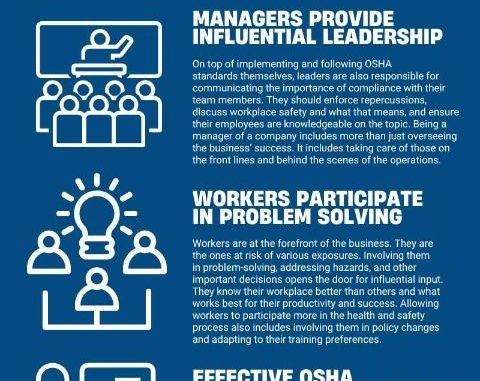
Ensuring the safety of employees in the workplace should be a top priority for every business. Not only does it protect the well-being of your workforce, but it also helps prevent accidents, lowers insurance costs, and boosts productivity. Here are some essential workplace safety standards that every business should follow:
1. Conduct Regular Safety Training
One of the best ways to ensure workplace safety is by providing regular safety training to employees. This should include training on how to use equipment properly, how to handle hazardous materials, and what to do in case of an emergency. By keeping employees informed and educated, you can help prevent accidents and injuries.
2. Maintain a Clean and Organized Workplace
A cluttered and disorganized workplace not only looks unprofessional but can also pose serious safety hazards. Make sure to keep work areas clean and organized, with clear pathways and designated storage areas for equipment and materials. Regularly inspect and maintain machinery to prevent malfunctions and accidents.
3. Provide Personal Protective Equipment (PPE)
Depending on the nature of your business, certain jobs may require the use of personal protective equipment (PPE) such as helmets, gloves, goggles, or respirators. Make sure to provide the necessary PPE to employees and enforce its use where appropriate. This will help protect employees from injuries and exposure to hazardous materials.
4. Implement Safety Protocols and Procedures
Establishing clear safety protocols and procedures is essential for maintaining a safe workplace. Create an emergency response plan, conduct regular safety inspections, and enforce safety guidelines to ensure compliance. Communicate these protocols to employees and provide training on how to follow them effectively.
5. Promote a Culture of Safety
Creating a culture of safety within your organization starts from the top down. Lead by example and prioritize safety in all aspects of your business operations. Encourage open communication between employees and management regarding safety concerns, and reward employees who demonstrate a commitment to safety in the workplace.
6. Stay Compliant with OSHA Regulations
It’s important for businesses to stay compliant with Occupational Safety and Health Administration (OSHA) regulations to avoid penalties and legal issues. Familiarize yourself with OSHA standards relevant to your industry and ensure that your workplace meets all necessary requirements. Regularly review and update your safety policies to reflect any changes in regulations.
7. Conduct Regular Safety Audits
Regular safety audits are crucial for identifying potential hazards in the workplace and ensuring that safety standards are being met. Conducting audits allows you to address any safety concerns proactively and make improvements to prevent accidents in the future. Make sure to involve employees in the auditing process to gather valuable input and feedback.
Conclusion
By following these workplace safety standards, businesses can create a safer and more productive work environment for their employees. Prioritizing safety not only protects your workforce but also enhances your company’s reputation and bottom line. Remember, when it comes to workplace safety, prevention is always better than a cure.
